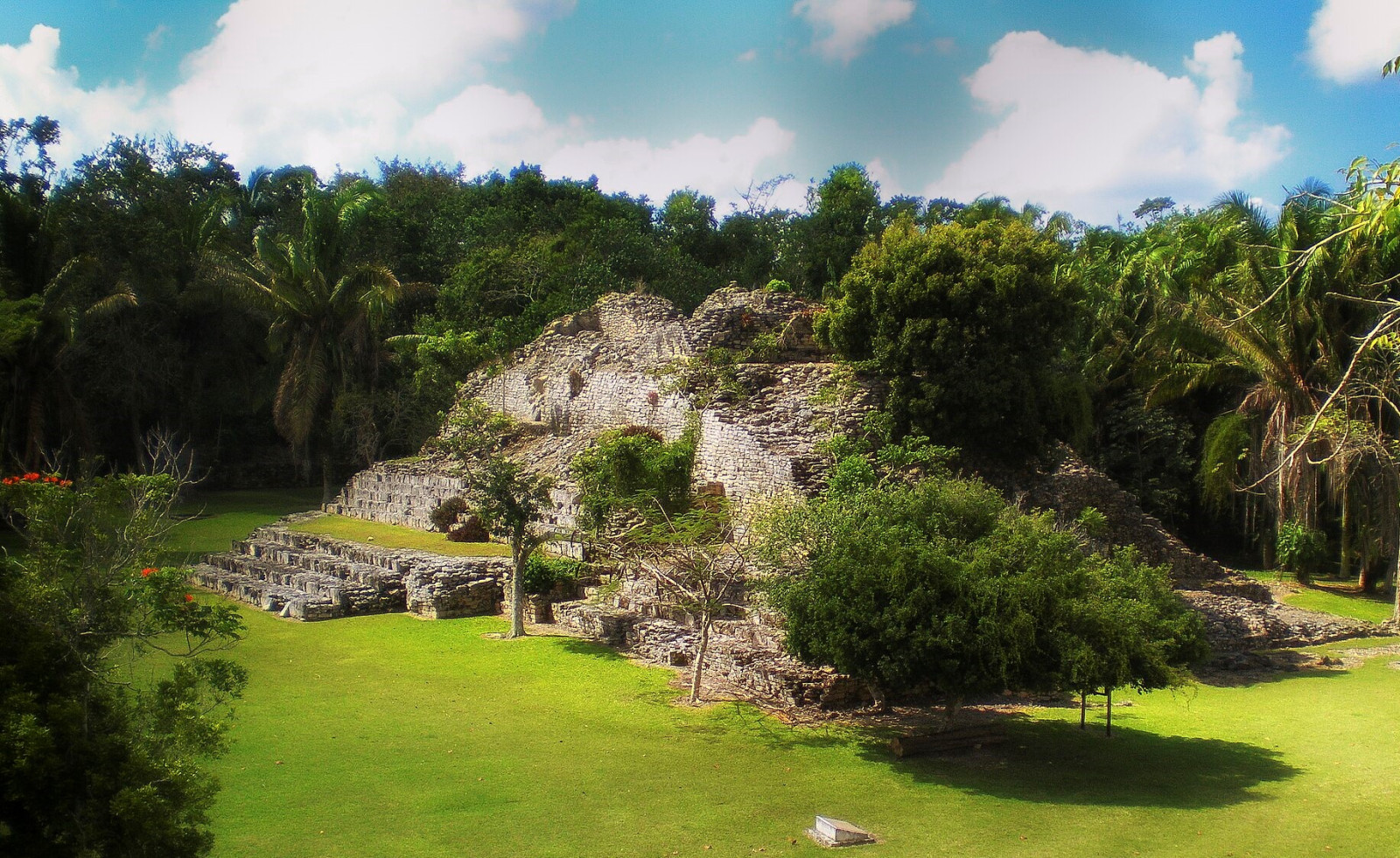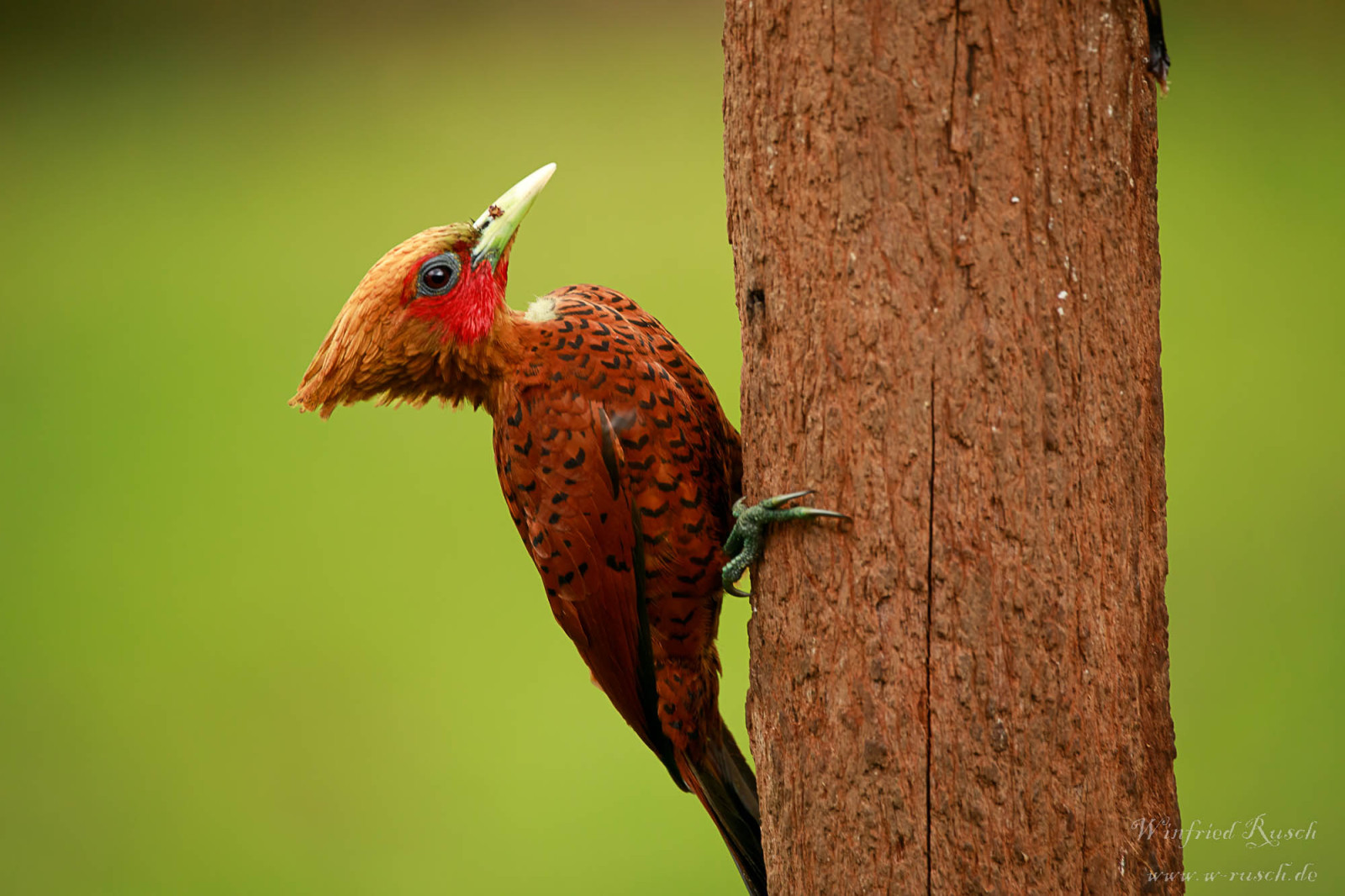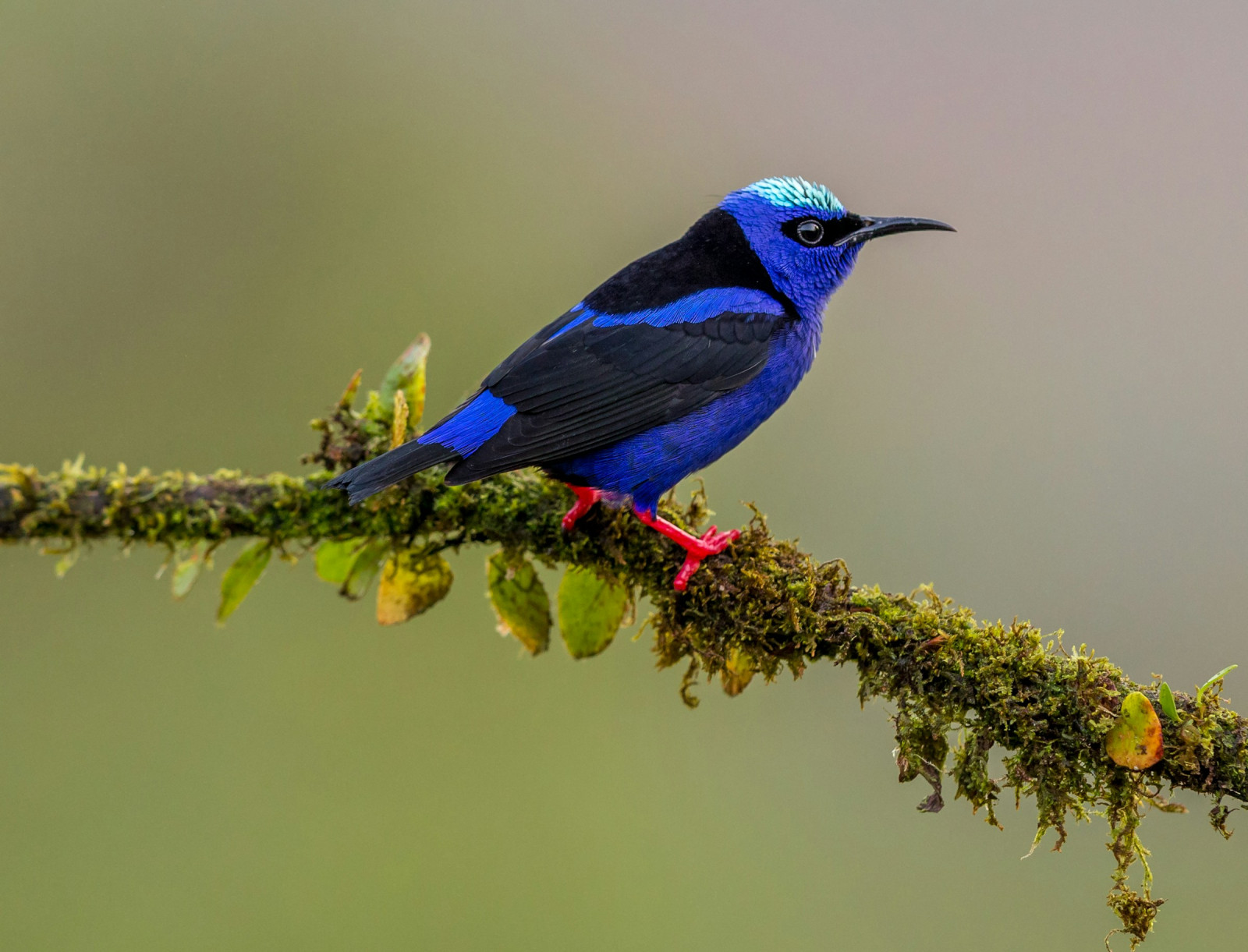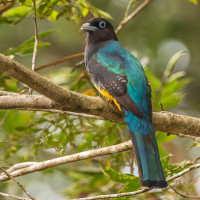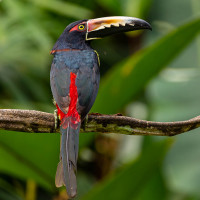Beschreibung
Kohunlich is an archaeological site of the Maya civilization. Many of the buildings and pyramids are still covered with thick vegetation and overgrown by trees. The ruins are surrounded by dense sub-tropical rainforest. There are no real tracks into the forest, so you mostly see forest edge species. However, many birds can be observed. For example Squirrel Cuckoo, Scaled Pigeon, Roadside Hawk, Lesson's Motmot, Yellow-throated Euphonia, Tawny-winged Woodcreeper, White-collared Manakin, Eye-ringed Flatbill, Bright-rumped Attila, White-breasted Wood-Wren, Pale-billed Woodpecker, Chestnut-colored Woodpecker, Royal Flycatcher, Great Kiskadee and Red-legged Honeycreeper.
Details
Zugang
Kohunlich is about 65 km west of Chetumal on Highway 186, and 9 km south of the road. This road that you have to take from the 186 is also good for birding (in the early morning) with fields and marshes and small forest patches. The archeological site itself (open at 8 am) is well wooded, but small. A visit is easily done within an hour. So best to divide your time birding between the 9 km road to Kohunlich and the archeological site. Click on the P in the map to get directions (or coordinates) to the archeological site.
Terrain und Habitat
Wald , Grasland, WiesenBedingungen
Felsig , Offene LandschaftRundweg
JaIst ein Spektiv nützlich?
NeinGute Beobachtungszeit
GanzjährigBeste Beobachtungszeit
Frühjahr , WinterRoute
Normaler WegSchwierigkeitsgrad der Tour
EinfachErreichbarkeit
zu FußBeobachtungshütten oder -türme
NeinZusätzliche Informationen
Foto Kohunlich by Memoplaza, CC BY-SA 3.0, https://creativecommons.org/licenses/by-sa/3.0, via Wikimedia Commons
